Cubes
Overview
On this page, we consider several structures which appear quite different at a first glance but show the same properties and features when examined more closely - they are just interpreted differently. Nothing is really proven by a mathematical proof, but everything is explained so thoroughly that the mathematical proof becomes obvious.
Geometrical Derivation
Geometrical interpretation: From n-dimensional to (n+1)-dimensional cube
We define: A 0-D cube is a dot (illustrated in blue).
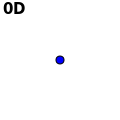
We move the (blue) dot a certain distance (along the green line) to the red dot and get a 1-D cube.
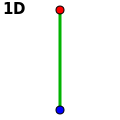
We move the (blue) 1-D cube in a direction orthogonal to itself (along the green lines) and get a 2-D cube (a square).
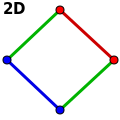
We move the blue square in a green direction orthogonal to itself and get a 3-D cube.
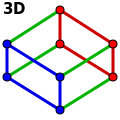
We move the blue 3-D cube in a green direction orthogonal to itself and get the 4-D hypercube.
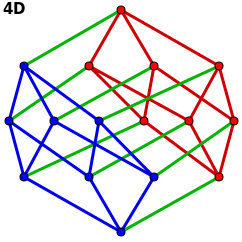
etc.
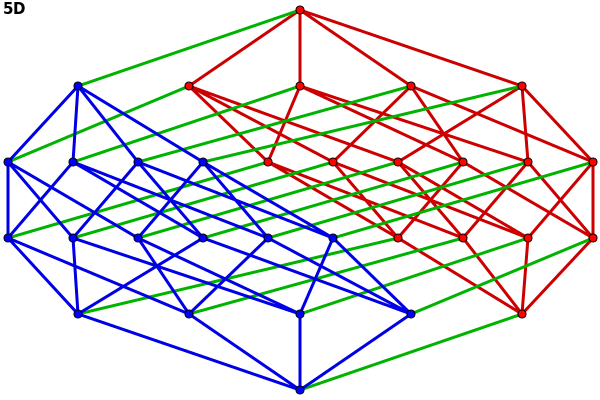
Or, neatly summing up these images in a single table:
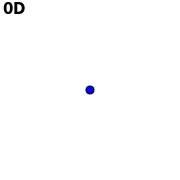 |
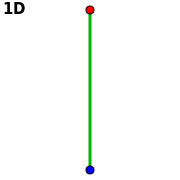 |
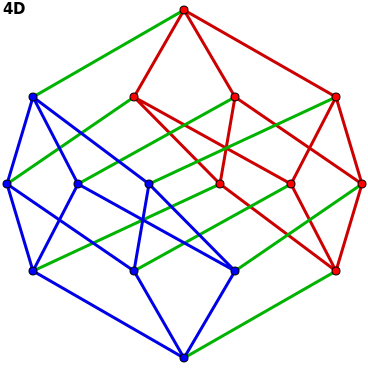 |
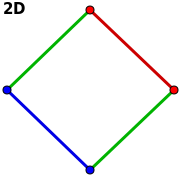 |
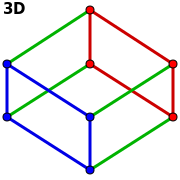 |
Power sets and the “is subset of” relation
The power set of a set is defined as the set of all subsets. As an example, we consider the set {a,b}, i.e. the set consisting of the elements a and b. The sets {a} and {b} (which contain only of the element a or b respectively) are all possible one-element subsets of {a,b}. The empty set {} is a subset of all sets (as all sets contain every element of {}). Additionally, {a,b} is of course a subset of itself. A subset of {a,b} cannot contain more than two elements, so we get the power set of {a,b} as { {}, {a}, {b}, {a,b} }.
If we now arrange the elements of this power set (which are sets themselves) such that every set which is a subset of another set is placed under the latter and connected with a line, we get the Hasse diagram. (Note: This diagram possibly has another name in English.)
The power set and the relation “is a subset of” form a so-called partially ordered set (or “poset” for short).
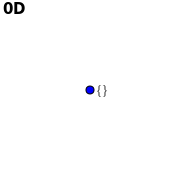 |
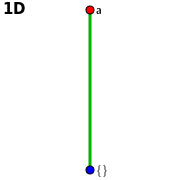 |
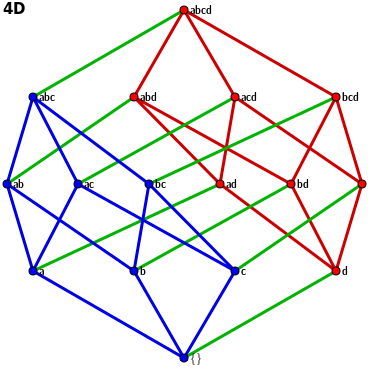 |
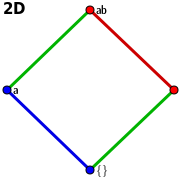 |
 |
The weight of n digit wide binary numbers
The weight of a binary number is defined as the number of binary digits with the value 1.
This system is used to create the pictures. To draw a n-dimensional cube we count from 0 to 2n - 1 and sort these 2n numbers by the weight, i.e. by the number of binary digits that are “1”. Then we connect the numbers which differ in exactly one digit and end up with the complete image.
In coding theory, this is a great visualization for a number of error correcting and error detecting mechanisms for code words consisting of n binary digits - even though the dimensions used in practical applications range in the hundreds and thousands.
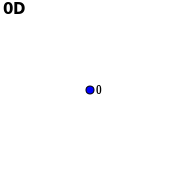 |
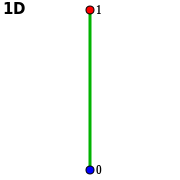 |
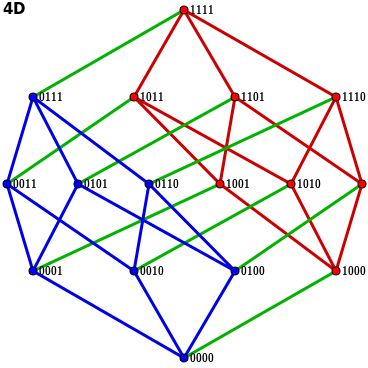 |
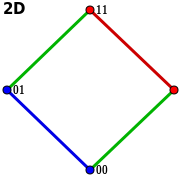 |
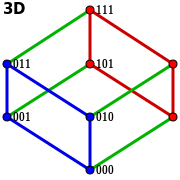 |
Other projections of a 4D cube
This is a beautifully symmetrical projection into 2D space. I first discovered this projection in 1994/95 in the book “Gravitation” by John Archibald Wheeler et al. This is probably
Gravitation Charles W. Misner (U. of Maryland) Kip S. Thorne (California Institute of Technology) John Archibald Wheeler (Princeton U. and U. of Texas, Austin) 1973, paper, 1215 pp. 0-7167-0344-0 W. H. Freeman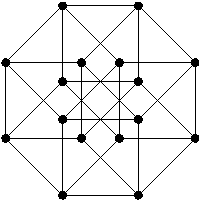
Simple shift of the 3D cube.
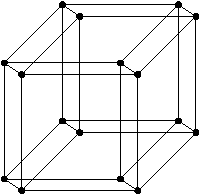
The canonical code word/power set projection with all the corners arranged on a square grid.
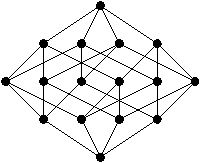
Another commonly found projection. It nicely illustrates how the 3D-cubes in the 4D-cube border each other on a common 2D-cube, much like the 2D-cubes in a 3D-cube border each other on a 1D-cube.
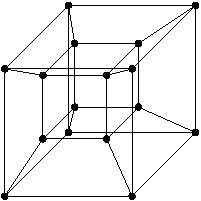
Projecting from 4-dimensional hyperspace into the 2-dimensional plane loses two whole dimensions. An obvious idea to preserve more information is to project into 3-dimensional space instead.
Unfortunately, building physical 3D models requires significantly more effort than letting the computer paint 2D pictures, which is why I haven’t built any models yet. But when I do, expect pictures here :-)
Following another approach to improve the display of 4-dimensional structures, one could write a “4D-engine” to display 4D objects on a 3D computer display.